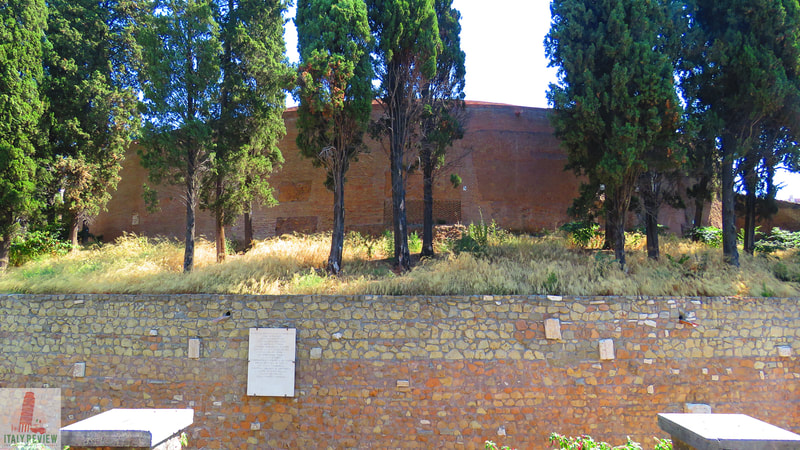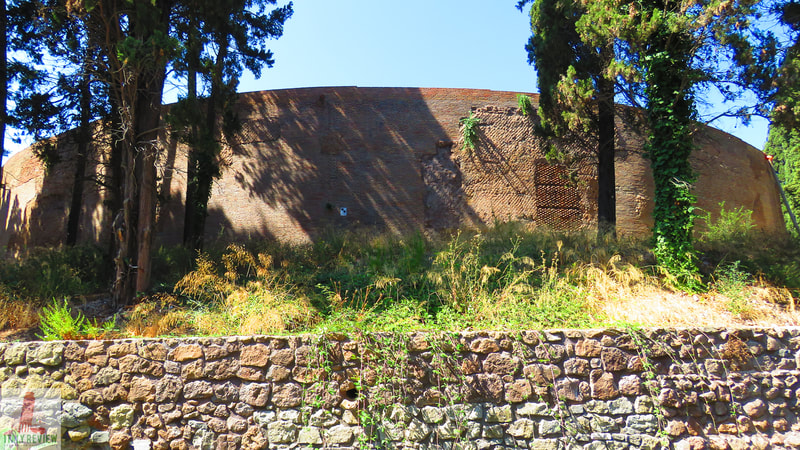Mausoleum of Augustus
|
Latest update: 15 January 2024
|
By Dion Protani
|
|
Get the latest edition of: Italy Review Magazine
|
|
The Mausoleum of Augustus was built as an elaborate burial chamber for Octavian, the first Roman Emperor in 28 BC.
Since the 1970's, the unusual circular construction was closed to the public in a state of disrepair, but was reopened in March 2021 after a €6 million grant to restore it. Situated close to the Ara Pacis museum, it's now one of the most important visitor sites in Rome. |
Related links
Profile
The Mausoleum of Augustus, located in Rome, Italy, is an ancient tomb built to honor Emperor Augustus, the first Roman emperor. Augustus, originally known as Gaius Octavius, rose to power after the assassination of Julius Caesar in 44 BCE. He became Rome's first emperor and ushered in the period of Pax Romana, a time of relative peace and stability in the Roman Empire.
History
Augustus began the construction of his mausoleum in 28 BCE and completed it in 23 BCE. The mausoleum served as the final resting place for Augustus, his family members, and successors. The structure was originally a large circular tomb with a diameter of around 87 meters (285 feet). It featured an imposing conical mound with a central chamber where the remains of Augustus were interred. The mausoleum was once surrounded by gardens and statues, making it a significant and monumental burial site in ancient Rome.
Over the centuries, the Mausoleum of Augustus underwent various transformations and uses. It was later converted into a fortified medieval fortress, a garden, and even a concert hall. Unfortunately, much of the original structure has been lost to time, and the site remained largely neglected for centuries.
Over the centuries, the Mausoleum of Augustus underwent various transformations and uses. It was later converted into a fortified medieval fortress, a garden, and even a concert hall. Unfortunately, much of the original structure has been lost to time, and the site remained largely neglected for centuries.
Key features and nearby attractions
- Tourist Information: In recent years, efforts have been made to restore and revitalize the Mausoleum of Augustus to its former glory. As of my last update in September 2021, the monument underwent extensive restoration to preserve its historical significance.
- Visiting the Mausoleum: While the Mausoleum of Augustus has been reopened to the public, it is essential to check the latest information regarding its accessibility and visiting hours, as they may be subject to change due to ongoing restoration work or COVID-19 restrictions.
- Location: The mausoleum is situated in the Campus Martius area of Rome, near the Piazza Augusto Imperatore.
- Design and Architecture: Although much of the original structure is no longer intact, visitors can still admire the architectural elements that have survived, including the circular base and the foundations of the conical mound. Interpretative panels and displays provide insights into the mausoleum's historical significance and the life of Emperor Augustus.
- Audio Guides and Tours: Guided tours and audio guides may be available to enhance the visitor's experience and provide in-depth information about the mausoleum's history and significance.
- Note: As historical sites like the Mausoleum of Augustus are subject to ongoing restoration and preservation efforts, it is advisable to check for updates and potential entry requirements before planning your visit.
Mausoleo di Augusto
|
City: Rome
Province: Metropolitan City of Rome Region: Lazio Built: 28 BC Architectural style: Ancient Roman Nearest Metro stop: Spagna - Line A - 750 m - 9 minute walk Fly to: Rome Fiumicino Airport - 29 minutes by car (31 km) |
Opening times
27 March - 21 April - 09:00 - 17:00 every day 22 April - 30 September - 09:00 - 19:00 every day 1 October - 14 October - 09:00 - 18:30 every day 15 October - 30 October - 09:00 - 18:15 every day 31 October - 26 March - 09:00 - 16:00 every day Ticket prices Full price: €5 Concessions: €4 |
Tickets to visit the Mausoleum of Augustus must be pre-booked via the official website here.
UNESCO World Heritage Site
Historic Centre of Rome, the Properties of the Holy See in the City Enjoying Extraterritorial Rights and San Paolo Fuori le Mura
Year: 1980
Historic Centre of Rome, the Properties of the Holy See in the City Enjoying Extraterritorial Rights and San Paolo Fuori le Mura
Year: 1980
Film Appearances
Eat Pray Love
2010
Eat Pray Love
2010























